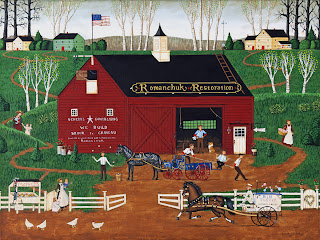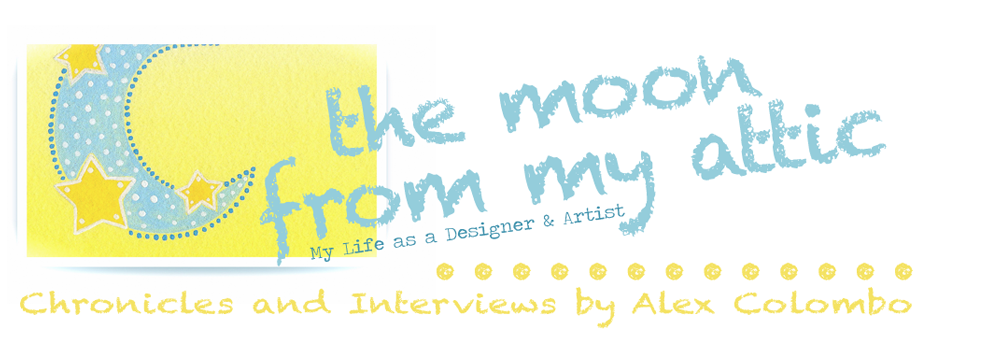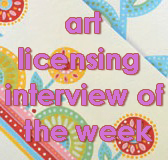In the meantime, I want to share this special story by artist Joseph Holodook. His licensing tale is very fun and unique!
 |
| Artist Joseph Holodook at work |
When Joseph paints an Americana landscape he paints with acrylic and some gouache. Joe says, "I paint at a drawing table; for my Folk art paintings a good ruler and architects square are a must. The paint I use is acrylic premixed in small squeeze bottles. They're inexpensive and come in a great array of colors. I do mix them though to come up with a particular hue I need for a piece." He also uses a good stretched canvas, usually 18x24 or 22x28 and small detail brushes sable number 1, 0/10, and 0/20. He affirms, "I always like sable brushes whether I'm using acrylic, gouache or oil."
 |
| Artist Joseph Holodook |
I asked Joseph what was exciting about his creative work and he said, "getting the chance to express your thoughts and feelings in your work, and learning a little something along the way. It could be an occupation you're depicting in a scene or the way people lived in a certain time or the architecture of a building. I find them all exciting."
 |
| © Joseph Holodook - Layering background lawn, sandy road |
One of his most liked techniques is layering in color for backgrounds. It adds depth to a relatively flat plane. Joe says, "the treatment I give the mountains is of a cut away tree demarcation line. I think it comes from looking at the old Catskill mountains I've hiked many times. I think it's important to add anchoring the buildings down at the corners. Since you're dealing with a flat on flat plane in a Folk Art painting the buildings need a bush or flowers, pot or barrel on corner to help the eye give solid placement to the building."
 |
| Anchoring detail |
"My portfolio at the time consisted of the four images I sent him. He was under the impression I had a large stash of work. Nothing could have been further from the truth. Lance took me under his wing and he, along with his wife Mimi, guided me along. So, many grey hairs later I am still painting whimsical Americana Folk art to holiday favorites."
 |
| © Joseph Holodook - Mountain Detail |
Joseph's advice to other artists that are considering the art licensing field as a professional career is this: "The next time you go to a department store take a good look around. You'll find licensed art everywhere, from stationary to seasonal goods. They all have licensed art on them. Always produce new art because if your successful with a piece, they will always come back for more. I have a good dear friend who went to school for commercial art. Now that her children have grown she would like to get back into the field. Don't be afraid of showing your art. Be willing to take constructive criticism. A licensing agent wants you to succeed. That's how they, and you, make money."
 |
| © Joseph Holodook - Romanchuk Restoration |
Your comments are welcomed.
Please enter them in the below comment section.
















